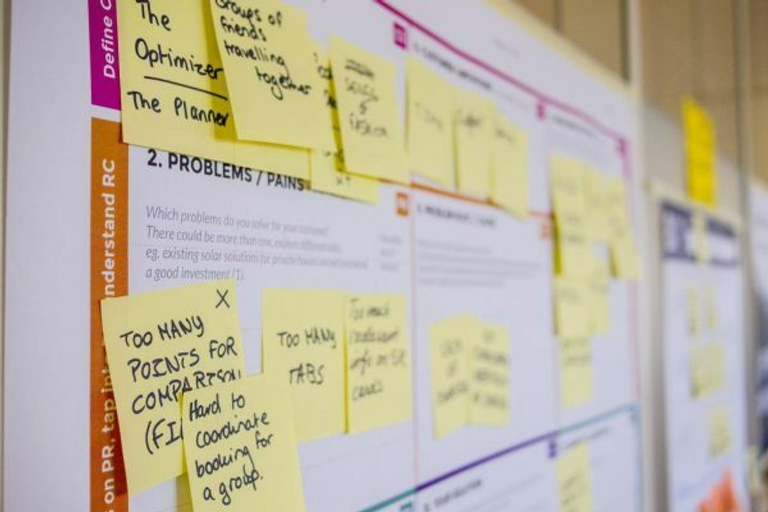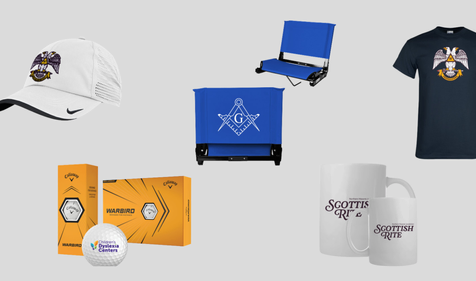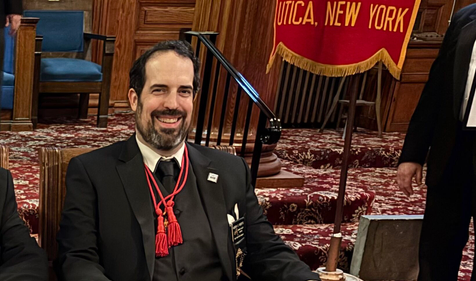We kick off our next Scottish Rite, Northern Masonic Jurisdiction "Meet the Team" guest blog with Director of Design Matt Blaisdell, 32°, who provides a unique perspective on using a methodology known as "Design Thinking: in the lodge to help problem solve and devise solutions.
As part of an ongoing "Meet the Team" blog series, we invited the Directors from each of Scottish Rite, Northern Masonic Jurisdiction's various departments to share some of their insights based on their specific area of expertise. We kick off our next "Meet the Team" guest blog with Director of Design Matt Blaisdell, 32°, who provides a unique perspective on using a methodology known as "Design Thinking: in the lodge to help problem solve and devise solutions.

The phrase Design in the Board Room can frequently be heard when discussing implementation of new ideas and programs within businesses and non-profits. While it may sound like a soft phrase of letting artists run wild in the conference room with their sketchbooks, paint swatches, or plethora of drawing tools, it is much simpler than that (though artists may have those items on hand and run wild from time to time).

The phrase itself alludes to a principle called “Design Thinking” which is the act of considering many different facets of a program such as strategic, cognitive, and practical thought processes. It is the act of considering human empathy (understanding who this program is for), defining the problem, ideating, prototyping, and testing to fully comprehend and deliver a solution for whomever you defined as your target. Simply put, it is an ideology and work process that can aid in the solution of complex problems while considering the impact that can be made on individuals or groups.
Much like Design in the Board Room applies to an office setting, Design in the Lodge Room applies to Freemasonry. Design, at the very base-level, can be incorporated in the visual elements of poster you hung up in your dining hall, or the imagery of your lodge, Grand Lodge website, and even the business card logo in the holder on your desk.
While Visual Design can be a part of the process, Design Thinking takes the audience into an even deeper consideration. What are their wants? What are their needs? It always considers the WHO first.
When we think about Lodges, this process is important because it encourages the inclusion of many different voices and perspectives for the purpose of sharing. Design Thinking is most successful as a collaborative team process where everyone at the table feels comfortable and is encouraged to share their thoughts and ideas. Through this, everyone has a voice, regardless of role or experience in Freemasonry. When people come together to collaborate creatively – that is when new ideas are developed and people are engaged in facing challenges for the future of your Lodge.
Design thinking can be applied to almost any situation that has a human element. As people-driven organizations, Blue Lodge Freemasonry and Scottish Rite Freemasonry each welcome the opportunity to expand and develop new ideas designed to make good programs even better. This process does not apply solely to a visual output; it is applicable to solving problems within the organization. As an example, a common problem you may ask to solve through Design Thinking methodology could be:
How do I get more members to get involved in our membership program?
1) Start the process by empathizing with your membership. This can be achieved through interviewing target individuals with the goal of understanding the initial question. While doing this, you may find the question goes deeper than what you had originally thought. This is a helpful step in truly understanding who your program is for and why they may not be as engaged.
2) Define the challenge you are trying to overcome. While taking what you learned from the survey, make focused statements on why you feel members are not engaged in your membership program. Defining the challenge may help you to recognize that it may be an inconvenient evening for your membership, it may not be as engaging as you had hoped, or even that people simply do not know about the program.
3) Ideate and create new ways to grab attention through different styles of communication or improving the context of the event you are hosting. This is the fun part – putting ideas to paper with a group of people to overcome the challenge.

4) Prototype your new ideas. This could be done through writing these new forms of outreach and program development in a clear fashion on a whiteboard with the group. It is important to recognize the learning styles of each team member and providing a visual will help promote an inclusive and comprehensive view of the plan. A solution may be developing a new form of communication outreach for members so they can stay informed in a timely and organized fashion.
5) Test your solution. After you have prototyped new solutions and your team is on board, it is time to test. Small grouping is an effective method, which requires asking a few people who were not involved in the process for feedback regarding how they would respond to this new idea as members. You may find your solution does not quite work with your grouping and may need to be modified. Most importantly, you now know the who, why and what of the challenge.
While my day-to-day job is oftentimes split between collaborating on designing a new brand identity for one of our programs, updating website imagery for future promotions, or creating new visual elements that our membership team can use to communicate with our members, I always consider my audience before doing anything. Anyone can think in this way, and it does not just apply in specific circumstances or frames of mind. Design Thinking skills do not take years of college to develop, nor are they limited to someone who carries a sketchbook around all day. It only takes opening up your mind, your heart, and your passion to overcome real challenges for real people through a tried-and-true methodology.
Read the rest of our Meet the Team blog series:
Scottish Rite Charities: Changing Lives Together
Related Stories
Discover additional Scottish Rite blogs and news on this topic.
-
Was Robert Burns a Freemason?
Famous Masons
Read More about Was Robert Burns a Freemason?
-
Celebrate Summer with Masonic Marketplace Must-Haves
News
Read More about Celebrate Summer with Masonic Marketplace Must-Haves
-
Brother to Brother: Tradition, Evolution, and the Future of Freemasonry
Inspiration
Read More about Brother to Brother: Tradition, Evolution, and the Future of Freemasonry



